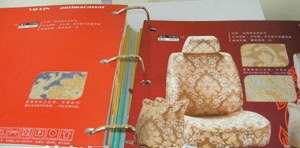With the continuous growth of the market demand for personalized on-demand printing products, the traditional book binding technology has also developed from the simple focus on firmness and appearance flatness to the individualization, functionality, and convenience of the product. The focus of the traditional binding process is to control the accuracy of folding, binding, cutting, and other processes to ensure that books and periodicals do not suffer from page faults during use, while the new binding process, in addition to ensuring that it has a "bookbinding" function, in the material Selection, Process) (Design, product use functional printing factory quotes, pay more attention to reflect the personalized design of product design, pay attention to both practical and visual effects, pay attention to the convenience and pleasure of the product use process. Thus, more and more Many publications have begun to use various types of new binding materials and technologies.This article focuses on the loose-leaf binding process.
Loose and loose-leaf binding
Loose-leaf refers to a single-page printed matter formed after printing of a printed sheet, after folding, collating, and the like, and is cut in four dimensions according to the final size. By punching the binding edge of the leaflet, a leaflet is formed. After binding of the leaflet and other inserts is completed, the user can add, delete or adjust the loose leaf sequence at any time by means of equipment or manual methods according to actual needs. The binding process is a more flexible binding method, and the product can be repeatedly "rebound" after the binding is completed.
From the market point of view, on the one hand, digital devices are becoming more and more popular, and the binding of office documents and materials in many departments and units has gradually been changed from simple, rough hand-lined, wire-typing, etc. to ring-setting, rubber-binding, and saddle-stitching. Such as the traditional book binding process closer. On the other hand, more and more domestic small-batch, small-format offset printing products and digital printing products, such as physical material samples, product printing samples, digital image data, personalized albums, operating manuals, product brochures, and promotional brochures, etc. Need to use a variety of printing materials binding at the same time, and the traditional bookbinding process can no longer meet the requirements, need to use more flexible and can be adjusted according to the circumstances change the binding process. In the era of pursuing personalized printing, the prepress graphic design, printing process preparation, and binding program selection must fully reflect the appearance of the product, convenient use, practical and durable features, and improve product competitiveness with superior quality.
Ring binders and ring binders are loose-leaf bindings that fully embody the product's personalization and user-friendliness.
Loose-leaf binding process
1. Ring ring binder
The hoop ring binder is a data sorting tool that is elegant in appearance, easy to use, and versatile. Compared with traditional wire binding and glue binding, it can better adapt to the binding of multiple varieties and numbers of text leaflets and inserts. The common binder used in office is mainly used to collect loose-leaf data. If it is necessary to accommodate operating manuals, image data, tapes, product catalogs, physical samples and other items, it needs to be tailored by a professional printing company and designed according to actual needs. Insert pockets and other details, ring binder is a good choice. As shown in Figure 1. With a ring binder binding process, the following choices need to be made.

(Figure 1 ring ring binder)
(1) Select the appropriate shell style
There are three kinds of shell ring binder casing: polyethylene shell, vinyl shell and edge shell. The polyethylene sheet is semi-rigid and has a thickness of 0.4 to 2.8 mm. It is strong and durable. Polyethylene is ideal for prints that need to be used frequently in poor environments or in outdoor operations. Program. The vinyl shell (as shown in Fig. 2) is wrapped with vinyl plastic film on the outside of cardboard and then heat-sealed along the periphery of the periphery. It has the characteristics of flexible structure and good versatility. The inner side of the shell can also be attached with various pockets. , CD sets and so on. The edging shell (as shown in Fig. 3) is to first bind the selected cover material to the cardboard and paste the lining inside the shell, and finally install the iron ring clip in the back position of the book. As offset printing products are characterized by vivid colors, rich layers, and vivid images, commonly used film-covered offset printing products are used as housing materials, and special covers or artificial leathers are sometimes used.

(Figure 2 vinyl shell)

(Figure 3 edging shell)
Magnetic Board,Magnetic Whiteboard,Black Magnetic Boards,Magnetic Writing Board
Jiangyin Europtronic Stationery Co., Ltd. , https://www.youpuwhiteboard.com